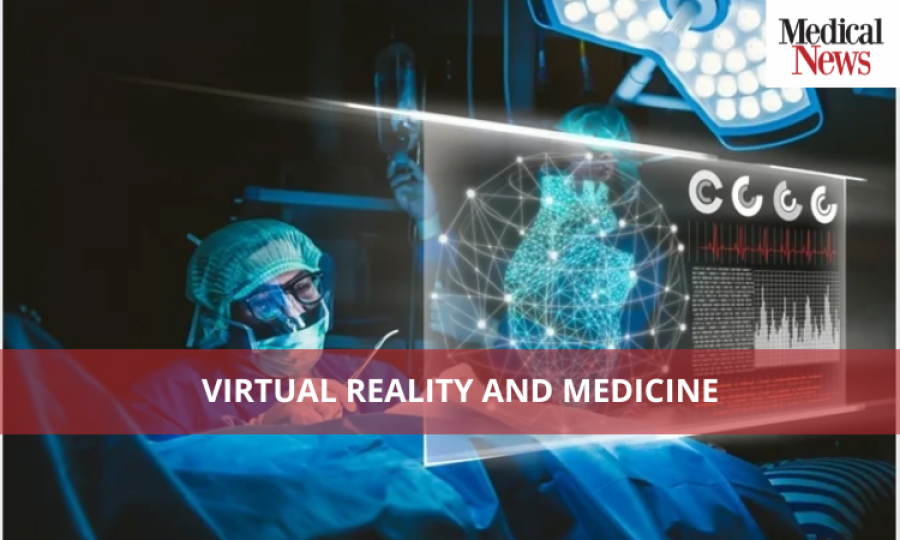Virtual Reality and Medicine

In 1965, the first virtual system for medical use was introduced by Robert Mann. This system was used in the decision-making process for an orthopaedic disease and was also later used to train residents. Head-mounted displays were introduced in the 80s and the term "virtual reality" was coined. Ever since then, there have been major developments in the technology and it has been vastly integrated into the medical field. Virtual reality (VR) has completely transformed the face of medicine and has widespread applications in the 21st century.
Education
Medical students can explore the human body virtually and see how the organs work up close. This works as a better alternative to just observing organs in a jar as it is more convenient and illustrative. In the context of practical skills, one can develop custom scenarios for training students, such as for paramedic training with realistic and stressful conditions. VR may also help in learning how to use medical tools in a safe environment. Additionally, it reduces the need for cadavers and training dummies used in medical training.
Surgical Training
Virtual reality allows doctors to improve their practical skills while saving on great costs and without having to face real-life consequences. VR holds great importance in the practice of high-risk activities like surgery. As compared to real-life patients, students will not be potentially risking a life in VR and it provides a great learning experience due to realistic visuals and feedback. As such, specialized VR training platforms lead to more regular practice of surgical techniques with numerous customizations to improve individual skill sets.
Dentistry
As with surgeons, dentists also gain numerous benefits from incorporating VR into their practice. They can improve their skills by working on virtual patients or 3D models of teeth with special drills which emulate real-life tactile feedback. For instance, a training system was developed, called the Haptic Dental Training System, which was a breakthrough learning method as compared to the mainstream use of plastic teeth on mannequins.
Planning Operations
Surgeons can use three-dimensional models using VR technology to prepare for complicated surgeries. They can use MRI and CT scans for accurate imaging of models of organs. These models can be examined from multiple angles and sections to plan out future procedures. Moreover, surgeons can even virtually carry out the operation before the one on the real patient to figure out the optimum process to conduct it.
Patient Consultation
Doctors can use three-dimensional imagery to better explain results and processes to patients by showing them what exactly is wrong with their bodies. Furthermore, this technology can be beneficial for consulting doctors over the internet when conducting physical meetings is not possible, like during the COVID-19 pandemic.
Diagnosis
VR can be used as a diagnostic tool to help physicians reach accurate diagnoses. This can be carried out in association with other imaging, such as CT scans and MRIs. This excludes the need for invasive testing, which leads to a pain-free experience for the patient.
Trending
Popular
Sindh pledges vigorous action to prevent poliovirus transmission
-
PMA stresses health equity on World ...
04:08 PM, 9 Apr, 2024 -
Dow University’s new rabies vaccine ...
12:18 PM, 28 Mar, 2024 -
IRD role lauded in advancing ...
02:53 PM, 12 Mar, 2024 -
Over one billion people worldwide ...
09:48 AM, 5 Mar, 2024




